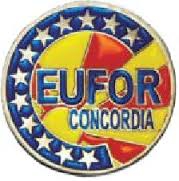Die Deutsche Gesellschaft für Auswärtige Politik - 01 juillet, 2003
Etude et analyse
Hajnalka Vincze
Etude et analyse
A casual observer of Concordia – code-name for the European Union’s first-ever military operation, conducted in Macedonia – would be first impressed by the abundance of symbols in almost every aspect of the mission. Not only do the politicians’ declarations put the emphasis on the „symbolic European message” carried by the operation[1] or present it as a „significant step forward in the long process of European integration”[2], but also the EU seems determined to plant its blue flag all over the place in order to increase its visibility – a goal explicitly identified as one of the key objectives of the mission.[3]

Tags:
europe de la défense, otan





















